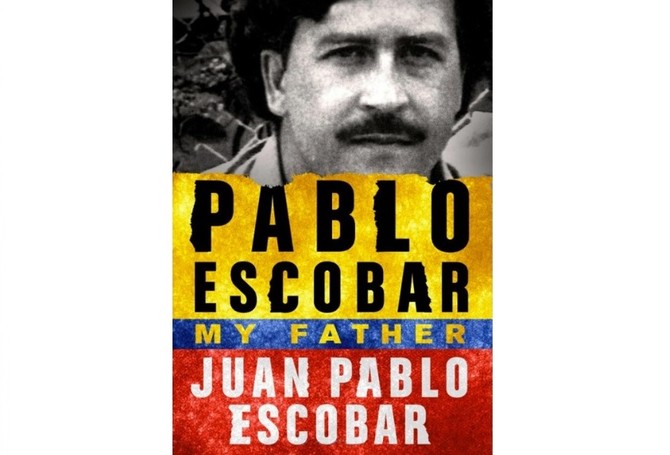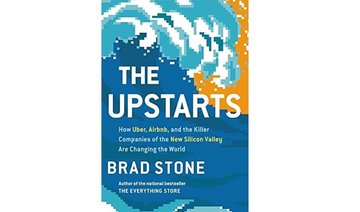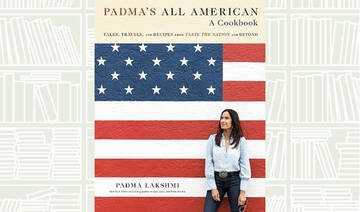This tale of love, blood and money is turning out to be one of this year’s international bestsellers. The narrative offers escapism and the chance to read about delicious scandals. Twenty-four years after Columbian drug lord Pablo Escobar’s death, his son recounts the dangerous life of one of the most infamous criminals of all time. At the height of his career, he was responsible for 80 percent of the cocaine entering the US.
From the beginning of “Pablo Escobar: My Father,” Juan Pablo Escobar writes that he wishes to be remembered for his own deeds, not his father’s. This book “is a quest, an attempt, to get closer to my father’s life. It is a personal, intimate investigation. It is the rediscovery of a man with all of his virtues, but also with all of his faults.”
Readers may be surprised to learn that the drug lord’s wife and children were treated more harshly by Pablo Escobar’s own family than by his worst enemies. The author accuses his uncle, Roberto, of betrayal, an allegation reconfirmed by two former American Drug Enforcement Administration (DEA) agents. It is perhaps even more difficult to understand the dire financial problems the family faced merely two weeks after the infamous man’s death, partially due to the security measures needed at the time.
Juan had always been close to his father. Although he claims to have rejected his father’s activities and opposed violence, he considered him a friend, a guide, a teacher and a trusted adviser. Despite his young age, the father trusted his son and told him about two different hiding places stocked with cash in case of an emergency.
However, when the cash was retrieved, it amounted to a small sum. Where had the money gone? Despite the lack of funds, members of cartels and paramilitary groups who had been fighting against Pablo Escobar demanded reparations. It would take six months to make peace with the cartels. Soon after, Juan, his mother and siblings were given new identities which dented the family’s savings. They left for Mozambique and then moved on to Buenos Aires. Their inheritance would finally be settled in 2014. Juan, whose new name was Sebastian Marroquin, told a court that “not a single member of my paternal family ever made a living on his own. All of them, without exception, have what they have today because of my father, not through their efforts. Columbia hasn’t forgotten who Pablo Escobar was, but his own family has.”
Pablo’s criminal career began when he found out how to forge his high school diplomas. He managed to steal blank diplomas with the school’s seal and had a copy of the seal made.
During this period, he adopted four habits which he kept for the rest of his life. First, he left his shirt unbuttoned down to the middle of his chest. Second, he cut his own hair. Third, he always used the same small tortoiseshell comb and, finally, he took very long showers which could take up to three hours. It also took him 45 minutes to brush his teeth with a child’s toothbrush and he said: “Son, as a fugitive, I don’t have the luxury of being able to go to the dentist. You do.”
Pablo went on to steal cars and found that crime paid off. He opened his first savings account in 1973 with a $50 deposit. That same year, 24-year-old Pablo fell in love with a 13-year-old slender and attractive girl, Maria Victoria Eugenia Henao Vallejo. She hailed from one of the wealthiest families in La Paz. Maria Victoria’s mother was extremely upset that her daughter was dating a man who was eleven years her senior, from a bad family and without a decent job. Despite the challenges, they married and had an intense and turbulent relationship which ended with Pablo’s death.
When Juan asked his mother why she fell in love with her husband, she replied: “Because of his naughty smile, the way he looked at me. I fell in love because he was so romantic. He was a poet with me, very thoughtful… He was affectionate and sweet. A great seducer… I fell in love with his desire to help people and his compassion for their hardship. When we were dating, we used to drive to the places where he dreamed of building universities and schools for the poor. I can’t think of a single time he ever said anything cruel to me or mistreated me. From beginning to end, he was always a gentleman to me.”
The romance was interrupted when the police stopped Pablo in a stolen car. He was incarcerated for two months and during that time he became friendly with Alberto Prieto, known as the “Godfather.” The Godfather eventually arranged for the evidence from the stolen car to disappear so the judge was forced to dismiss the proceedings and release Pablo from prison. This is when Pablo entered the dangerous world of narcotics.
His business grew fast and in 1975, at the age of 26, he deposited a check for 100 million Columbian pesos. On several occasions, his son asked his father about the size of his fortune and he always gave the same answer: “At a certain point, I had so much money that I lost count. Once I knew I was a money-making machine, I stopped worrying about counting it.”
Fit for a narcotics kingpin
Pablo went on to build himself an estate called Hacienda Napoles.
The estate had its own gas station and body shop for repairing and painting cars and motorcycles. It had 27 artificial lakes and 100,000 fruit trees, Latin America’s largest motocross track, two heliports and a 1000-yard airstrip, 1,700 employees and covered 7,500 acres with three zoos and ten residences. It also had a Jurassic Park-themed park with life-size dinosaurs. These huge, brightly-colored cement animals were punched with holes during a raid because authorities thought they were stuffed with cash.
When his father decided to turn himself in on June 19, 1991, his son believed he would no longer commit crimes but this did not turn out to be the case. He lived a comfortable life in prison and managed to run his operations from behind bars. Despite his illegal activities, Pablo also financed the construction of football fields, basketball and volleyball courts and health clinics and had also planted trees in poor areas of the country. “My father wanted the boys in those communities to get involved in sports instead of, paradoxically, drugs or crime,” his son wrote.
Pablo escaped from the cushy prison but died on Dec. 2, 1993, when he was shot on a roof while trying to evade the authorities. The fatal bullet entered his right ear but his son believes Pablo fired the shot himself, committing suicide to avoid capture.
Juan was 16-years-old when his father died. He is now a successful architect, is married and lives in Argentina. Although he has no desire to relive the past, this book gives him the opportunity to denounce his father’s actions while reminding readers that there was a hidden side to this infamous criminal.
Book Review: The dangerous life and times of Pablo Escobar
Book Review: The dangerous life and times of Pablo Escobar

Book Review: ‘Keep the Memories, Lose the Stuff’

If you are someone who adopts a new year, new me mindset every Dec. 31, then Matt Paxton’s 2022 book “Keep the Memories, Lose the Stuff: Declutter, Downsize, and Move Forward with Your Life,” written with Jordan Michael Smith, is worth picking up.
In the process of reading it, I found myself filling four bags with items to donate.
Paxton’s approach is notably different from Marie Kondo’s once-ubiquitous Japanese tidying method, which asks readers to pile all their possessions into one part of the room, hold each item up and ask whether it sparks joy.
While Kondo’s philosophy sounds appealing on paper — thanking objects and dedicating an entire weekend to the process — it is not realistic for everyday life. Paxton’s method feels more practical and gentler.
Paxton knows the emotional terrain of clutter well. For more than 20 years he has helped people declutter and downsize. He was a featured cleaner on the reality show “Hoarders” and later hosted the Emmy-nominated “Legacy List with Matt Paxton” on PBS.
Through this work, Paxton gained insight into why people hold on to things and what makes letting go difficult even of what seemingly looks useless.
What works especially well is how personal the book feels from the outset.
He opens by explaining his anxiety-inducing decision to move to a different US state with his three children, and all of their stuff, to live with his new wife and all of her stuff.
Together, they would be raising seven children — very Brady Bunch style — but with slightly more practical life considerations.
He also talks about how he got into this line of work. When he was in his 20s, his father died and he had to help clear out his belongings. He found that process to be cathartic and special. And he was good at it.
Soon after, short on cash, he accepted a job from someone in his small, close-knit community to help organize her home — likely hired out of pity more than anything else.
That slow process of sifting through items and learning the stories behind each one — directly from the owner of those objects — sparked plenty of joy. He was hooked.
Throughout the book, Paxton makes the case for consistency. His advice is manageable. He encourages readers to dedicate just 10 minutes a day to decluttering to form a habit. We all can spare that.
Paxton also stresses the importance of communication.
Talk to your loved ones about what you want done with your belongings when you are no longer around, and just as importantly, listen to what they want done with theirs, he urges. He offers practical guidance on having these conversations with parents, partners and children.
One critique of this book is that Paxton dedicates a large portion to physical photographs. While this is relevant for many older readers, it may feel less urgent going forward, particularly for Gen Z and younger, whose clutter is more likely to be solely digital.
Ultimately, “Keep the Memories, Lose the Stuff” is less about getting rid of things than about making space; by speaking about objects, sharing their stories and allowing them — and each of us — to move on.














